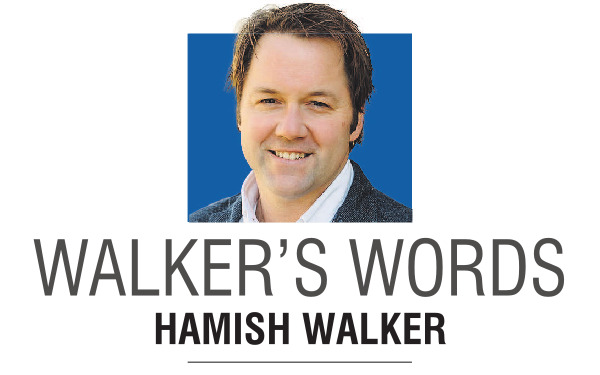
It’s not just weather forecasts and wool bales — it’s sheer determination, sheer guts, consistent improvement and foresight.
I have always believed our best farmers are also some of our smartest businesspeople. They have to be. When you think about everything that’s outside their control — global meat and milk prices, droughts and floods, labour shortages, compliance costs, disease — it’s a wonder anyone stays on the land at all.

John Perriam, of Bendigo Station in Central Otago, is one of those rare few. He’s a thinker, a giver, and one of the cleverest businessmen this region has ever produced.
Surviving the hard years
John and his late wife, Heather, took over Bendigo Station in 1979, and for more than four decades he’s endured everything the high country could throw at him. He’s lived through droughts that turned the hills to dust and wool prices that barely covered the shearer’s lunch. But where others might have given up, John innovated.
Back in the 1970s, John opened the Otago Daily Times one morning and read about the proposed Clyde High Dam. This would have been a huge shock. The government was taking away his land and flooding it.
He fought tooth and nail against it, taking on the politicians. A good, positive result was the government decided to have much lower lake levels than planned and agreed to beautify the area.
John restructured Bendigo into a mix of fine-wool farming, vineyards, lifestyle zones and public walking tracks long before "diversification" became a buzzword. He opened the property to locals and tourists, even when people told him he was mad to do it. He saw opportunity in connection, not isolation. That’s what separates the real farmers from the rest: the ability to see 10 years ahead, not just 10 paddocks in front.
Adding value to wool
Long before "value-added" became policy language, John was already doing it. In the 1990s, wool growers still relied on the old auction system, which was unpredictable and stacked against producers.
He was part of the farm-leader group that helped push New Zealand’s merino sector away from auctions and towards direct brand contracts. He played a key role in establishing Merino New Zealand (which evolved into the NZ Merino Company), a platform that allowed long-term partnerships between growers and global brands such as Icebreaker.
That shift changed everything. It linked quality fibre with brand storytelling, traceability, and consistent income. It meant farmers could plan, invest and capture more of the final retail value of their wool — and it put high-country properties like Bendigo on the global map for premium merino.
Shrek: the sheep that stole the nation’s heart
Of course, John Perriam’s name is forever linked to Shrek, the hermit merino wether who somehow avoided muster for six years and emerged in 2004 with a fleece weighing a staggering 15kg.
When Shrek was finally caught and shorn live on television, it became one of those pure Kiwi moments everyone remembers.
The late Paul Holmes even did a live cross from a packed bar in Cromwell during his show, with locals cheering as the famous fleece came off. Icebreaker made Shrek’s red coat and later produced limited "Shrek jerseys", tying together the fibre, the brand and the story.
To the prime minister of the day, Helen Clark, it looked like an opportunity for some positive publicity, so she invited John and Shrek to Parliament. Coincidentally, that same day thousands of protesters were demonstrating against the foreshore and seabed changes and Miss Clark declined to meet them — instead, she met Shrek. When the media asked why she chose to meet a sheep over thousands of protesters, she simply replied, "Because he was better company".
For a while, Shrek became a celebrity in his own right — flying around the country on Air New Zealand flights to charity events. Imagine boarding your flight to Auckland and seeing a merino sheep stroll down the aisle. Only in New Zealand.
But John didn’t stop there. When media reports emerged of icebergs drifting up the South Island coast from Antarctica, he had another idea — to fly Shrek out and shear him on an iceberg. With a helicopter, crampons, a wool mat, and champion shearer Jim Barnett, they landed on a floating berg about 160km off the Otago coast. The stunt was audacious — but it made international headlines and raised huge money for Cure Kids Cancer Foundation.
It was a marketing masterclass wrapped in Kiwi humour and it cemented Shrek’s legend forever.
Altogether, the Shrek story raised more than $1million for charity, supported children’s hospitals and rural causes, and proved John’s knack for turning stories into value for his community.
The $55m sale and giving back
This year, at nearly 80, John made headlines again after selling about 800ha — roughly 10% of Bendigo Station — to gold-mining company Santana Minerals for about $55m. It was, in his own words, a "long, difficult process". But, true to form, he’s using it to give back.
The Perriam family plans to create a charitable trust to support local medical services and John has made it clear he wants the mined land restored and turned into a public park for future generations. It’s classic Perriam — practical, generous and forward-looking.
Legacy in motion
John lives at Millbrook with wife Liz, while sons Stewart and Daniel farm Bendigo and daughter Christina and her husband run Tarras Village, a thriving development honouring Heather’s legacy. Through droughts, rebuilds, heartbreak and headlines, John has stayed humble, generous and grounded.
He helped lift the value of New Zealand wool, proved that good storytelling could change markets and showed that stewardship could sit comfortably beside innovation.
In a world quick to criticise farmers, it’s worth remembering men like John Perriam. They remind us that the smartest businesspeople in New Zealand might not wear suits — they might wear merino.
• Hamish Walker is a former National MP and director/salesman of Walker & Co Realty, Queenstown.










